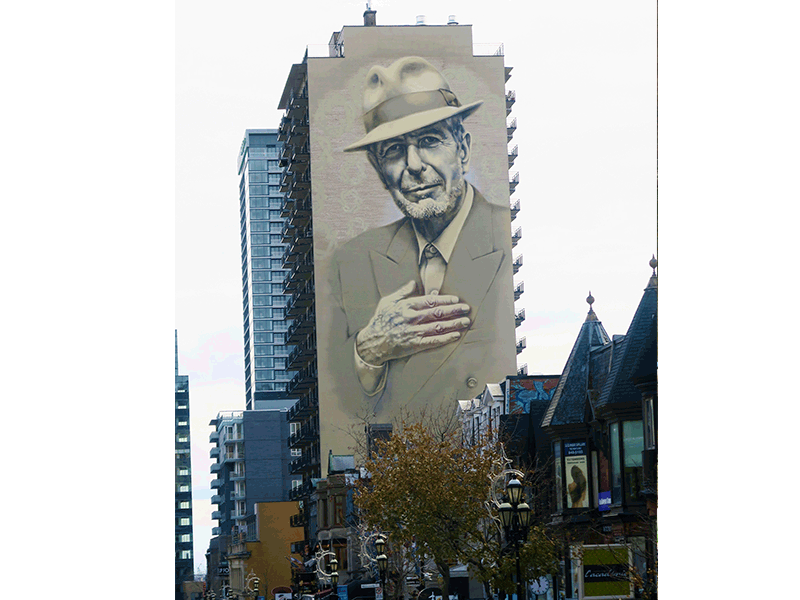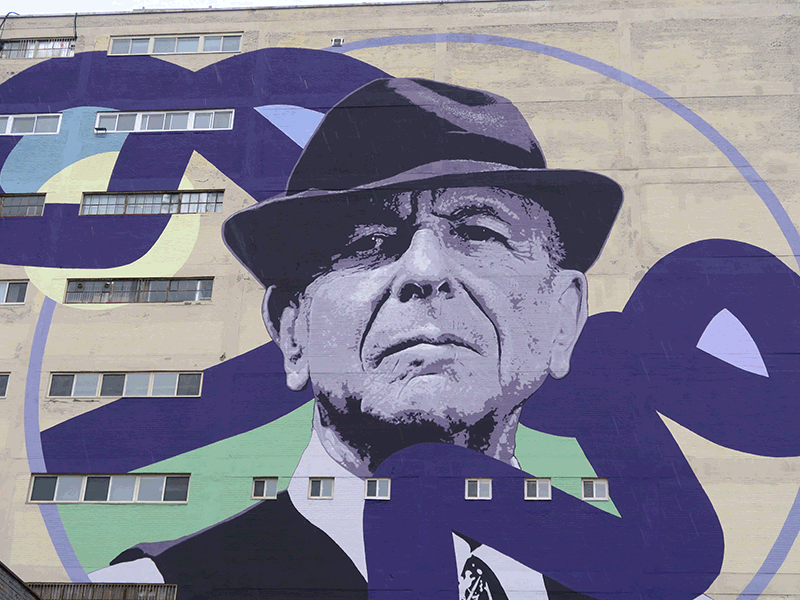Like most people, Archie Fineberg used to pay little attention to what was on the sides of buildings he drove by. But he could not fail to notice that Montreal was increasingly becoming one big canvas for some very impressive art.
The unsightly graffiti that had marred the landscape for decades was making way for marvellous, large-scale murals that were transforming previously dreary structures and dodgy alleyways. And blank brick walls were now being covered with high-quality paintings.
But who was creating the art? Typically, mural artists sign using a pseudonym and remain unknown and under-appreciated by the public, Fineberg felt. Although less true today, much of the art is ephemeral – works vanish and are replaced by others.
His self-published book, Montreal’s Street Art Gallery: The Best of the City’s Graffiiti and Wall-Art, is Fineberg’s tribute to those artists, many of whom he has come to know as he immersed himself in the underground world of street art. It includes full-colour reproductions of scores of works.
It’s a strange preoccupation for a 75-year-old retiree who was a financial manager for a watch-importing company for 36 years. He admits to having been more adept at watching the bottom line than appraising art until his eyes were opened.
Fineberg retired four years ago, but started reducing his hours in 2010. He enrolled in Concordia University’s Liberal Arts College and, two years ago, received a BA.
READ: WALKING IN LEONARD COHEN’S FOOTSTEPS A YEAR AFTER HIS DEATH
He was especially fascinated by his art history courses. Photography had been a hobby of his for years, so with his artistic awakening, he set out to document as many examples of street art as he could. Soon, he was interviewing artists and researching the history of the genre.
“My curiosity was piqued by these brightly coloured, often fanciful murals, that often were expressions of social commentary,” he says. He was taken not only with their esthetic merit, but the technical skill involved in transposing a picture of great intricacy onto a massive surface, usually one that is uneven and rough. Of course, the artist also must work entirely outdoors, often high up on a scaffold or crane.
Fineberg travelled from one end of the city to another, frequently venturing into neighbourhoods he barely knew.
When he started, there were a few commissioned pieces, but mostly “spontaneous, self-financed works.” However, by 2014, the year he fully retired, mural art was really taking off in Montreal, thanks to more funding and the city’s encouragement. “Taggers” were morphing into professional artists who were working in the open.
“What had been born of discontent and rebellion intended to shock and annoy mainstream society has now earned a legitimate place in public spaces,” he writes in the introduction to Montreal’s Street Art Gallery. (Encouraged by the response, a French translation, Montréal, galerie à ciel ouvert, is just off the presses.)
Once almost an exclusively male domain, the genre is attracting an increasing number of women. A favourite of Fineberg’s is Annie Hamel.

He chose her whimsical, yet breathtakingly complex scene of a working-class Montreal neighbourhood for the cover of the French book. Titled, Le Montréal de Miyuki Tanobe, the mural is located on LaSalle Boulevard in Verdun.
The original English version bears ThaPhlash’s The Girl on Hôtel de Ville, a big-eyed, purple-haired cartoon character wrapped around the corner of Hôtel de Ville and Duluth streets.
Fineberg has prominently featured the outstanding creations of four collectives that have sprung up: A’Shop, Art du Commun, En Masse and MU.
The latter, a non-profit organization, is responsible for portraits of Mordecai Richler and Leonard Cohen (the first of the two that have been painted around town).
The Richler, which was completed two years ago, is a sophisticated caricature, in Fineberg’s opinion. The line drawing by Dominique Desbiens and Bruno Rouyère is on Laurier Avenue, near St-Urbain Street.
The first Cohen mural, which was completed a year ago, is on St-Dominique Street. Fineberg likes the dramatic, rather forbidding portrait by Kevin Ledo, but if he had to choose between the two Cohen murals, he leans toward the one looming 21 storeys over Crescent Street that was inaugurated in November.

“Both are of a mature Cohen, but I find the one on Crescent warmer, kinder,” says Fineberg. “There’s a hint of a smile on his stubbled face and the hand over his chest has red shading, suggesting his heart.”
Another Jewish figure who has been memorialized in street art is Léa Roback (1903-2000), the legendary Montreal union organizer and social activist. She is the subject of sticker art by Walloffemmes on a pole in the Plateau.
Fineberg also discovered Main & les Autres on Pine Avenue East. The iconic late Quebec actor Gratien Gélinas is depicted in his famous role as Fridolin, a young Québécois antihero. The ethnic “les autres” beside him include two Jewish men in tallitot and a bar mitzvah boy.
Among the outlets selling the book are four museums: the Montreal Museum of Fine Arts, the McCord Museum, the Canadian Centre for Architecture and the Museum of Jewish Montreal, which pleases Fineberg because it proves that these talented people are gaining recognition.
